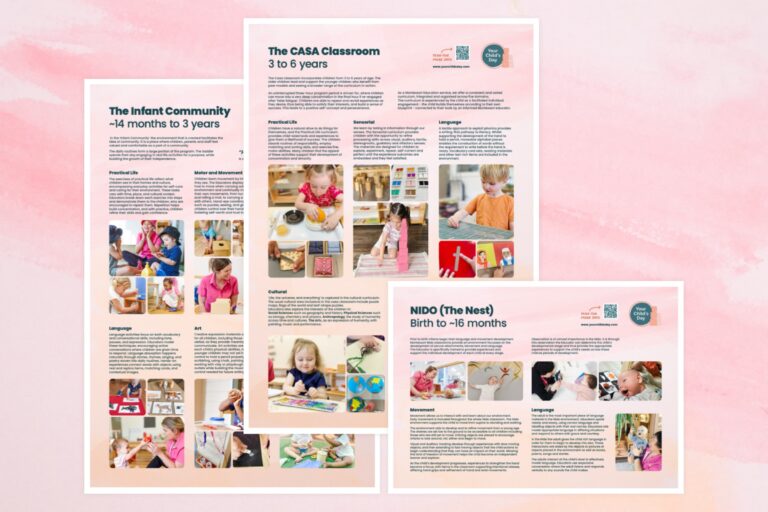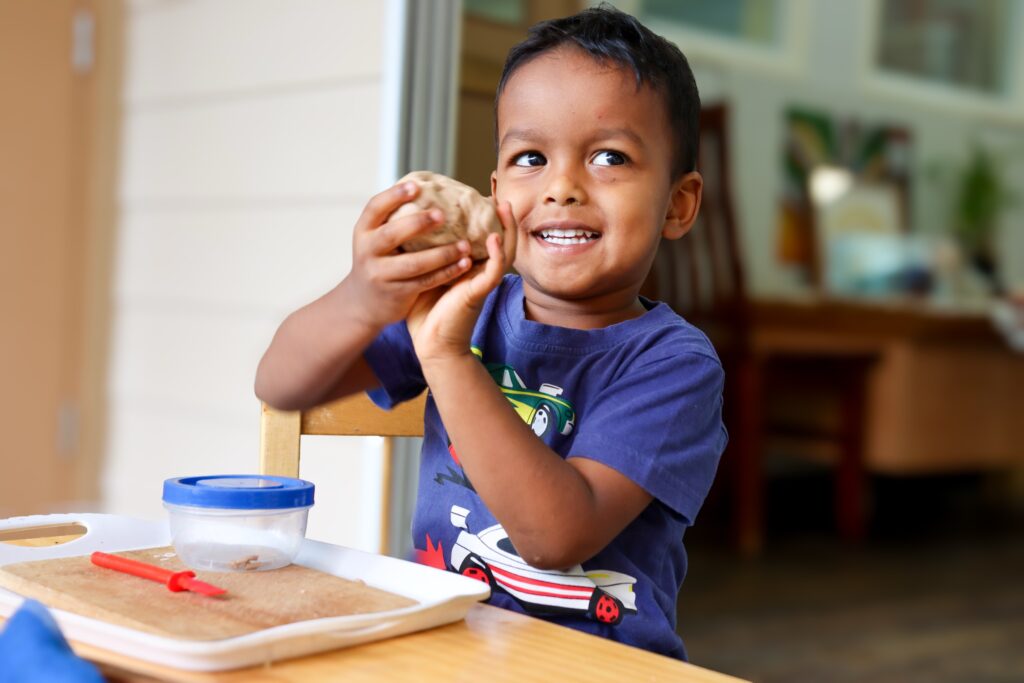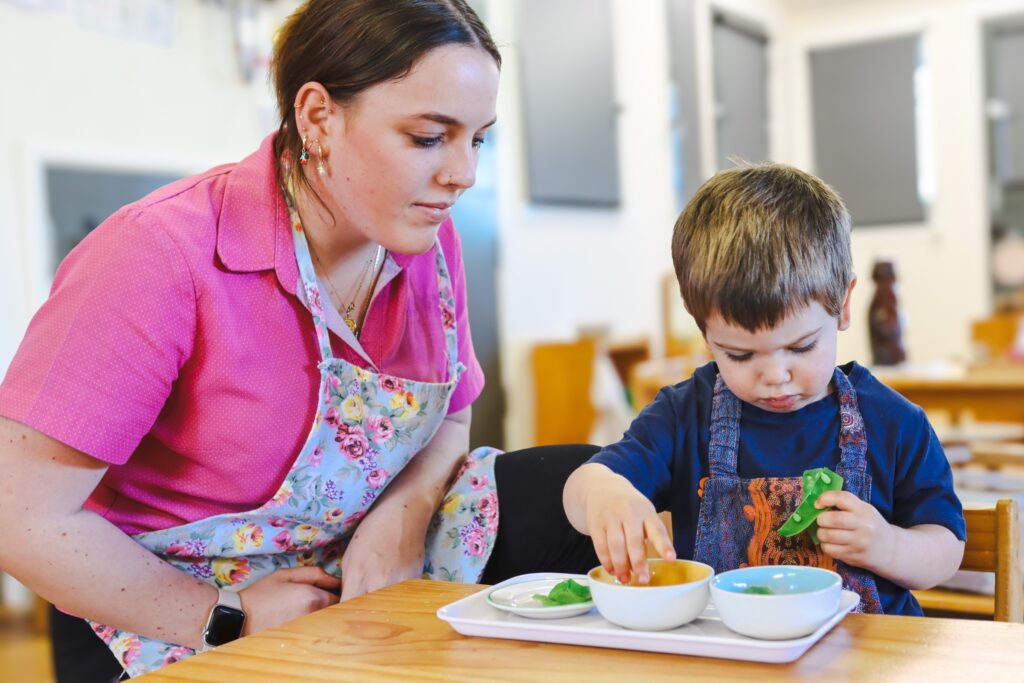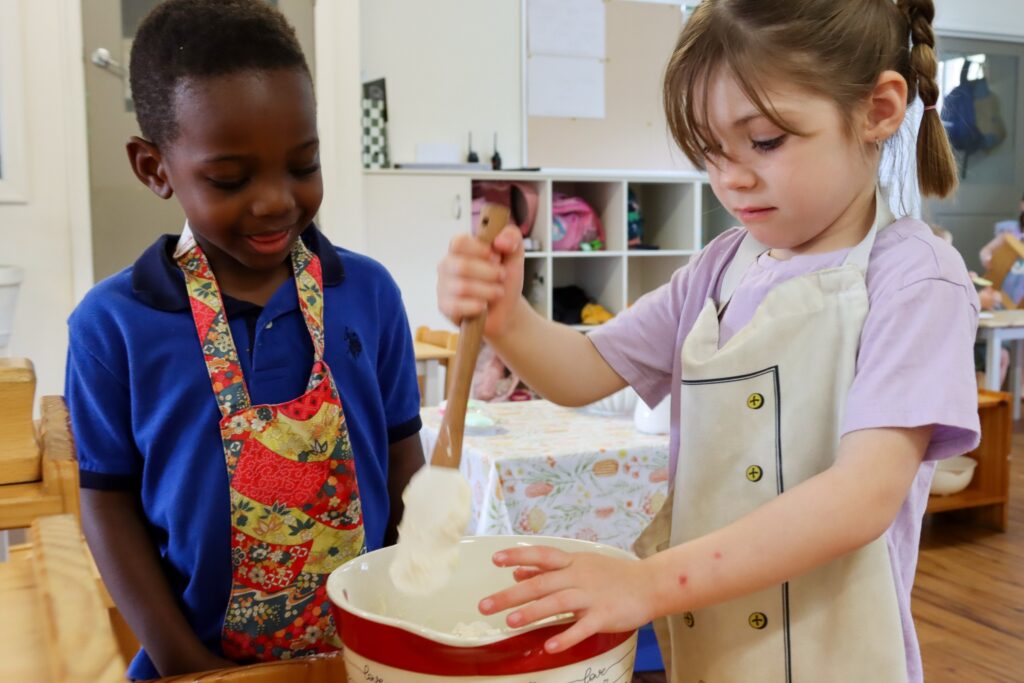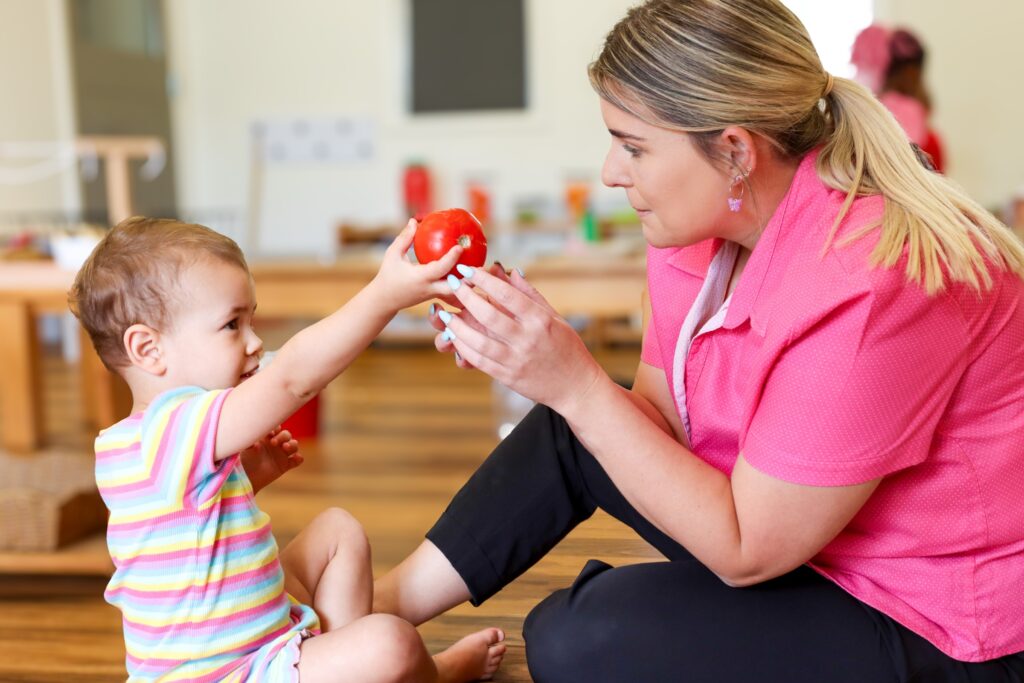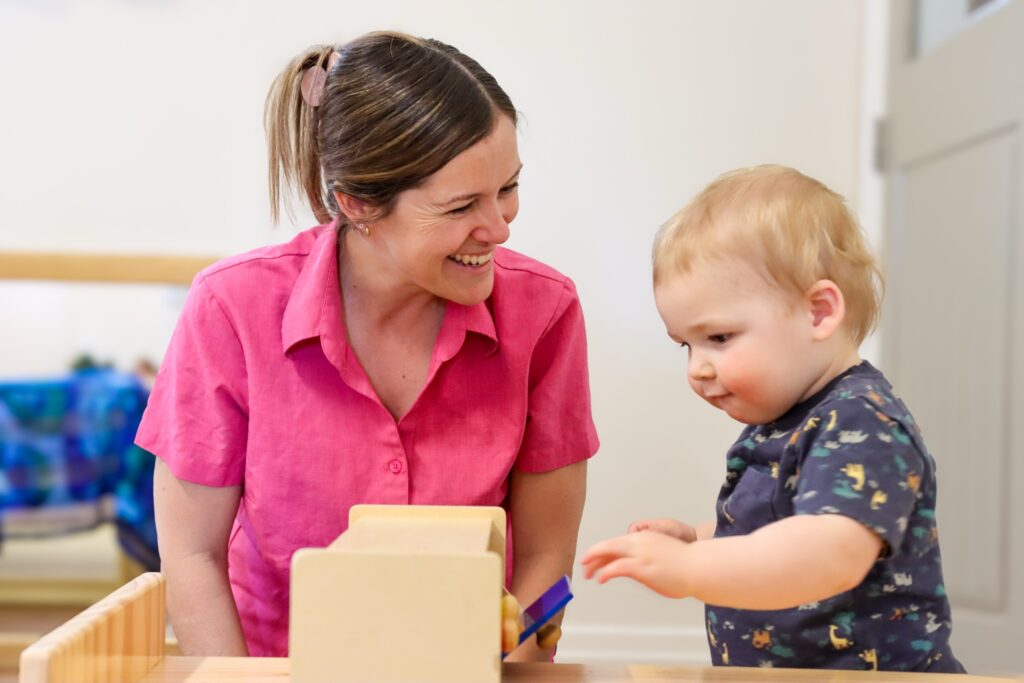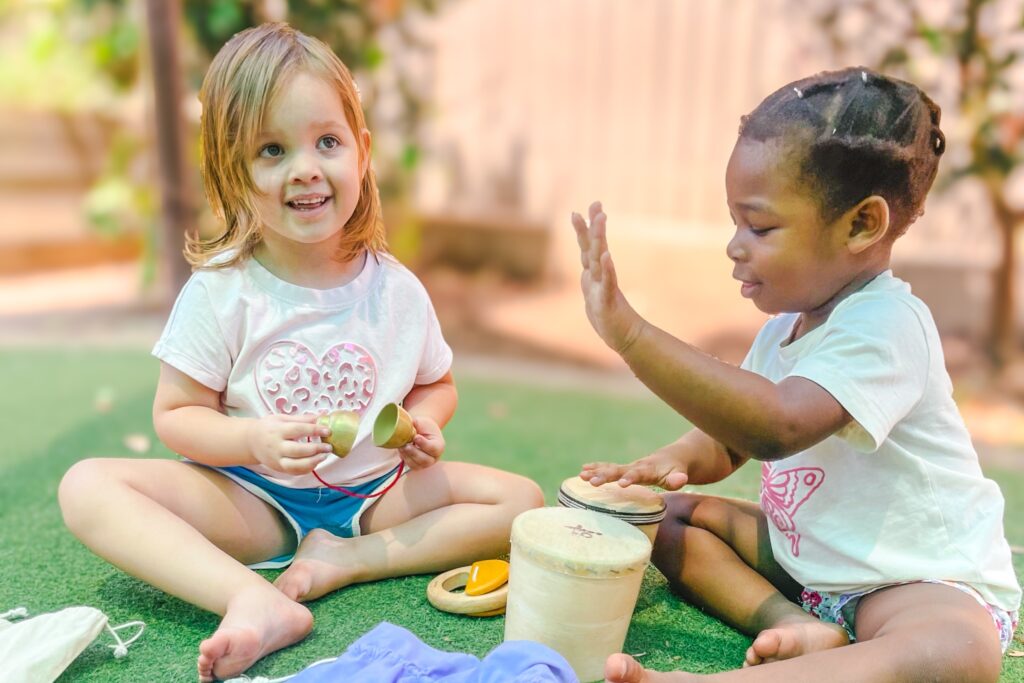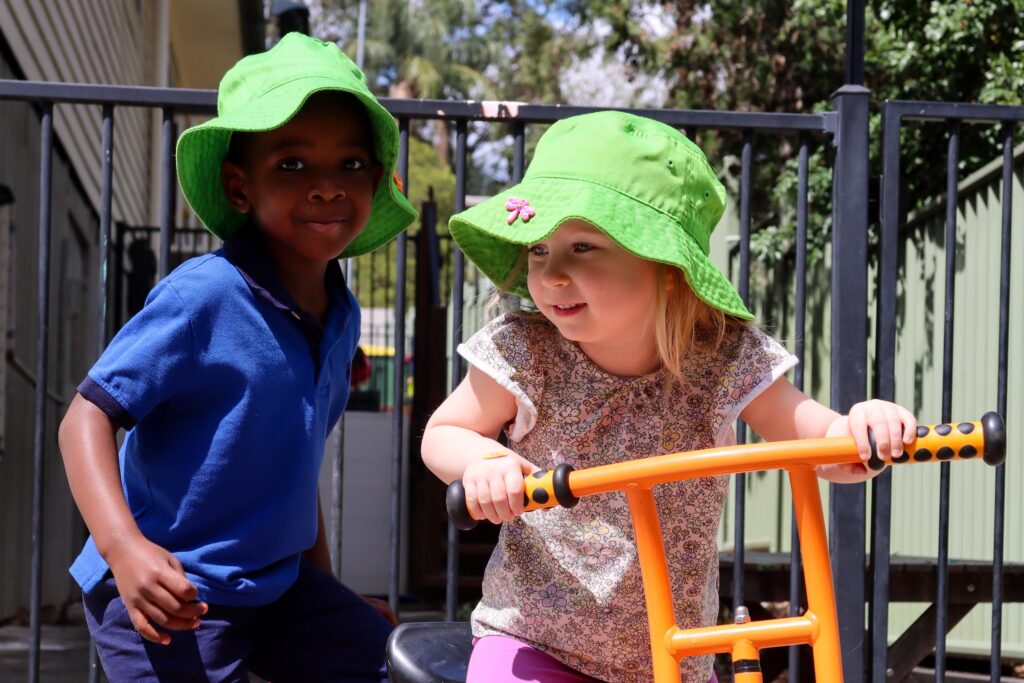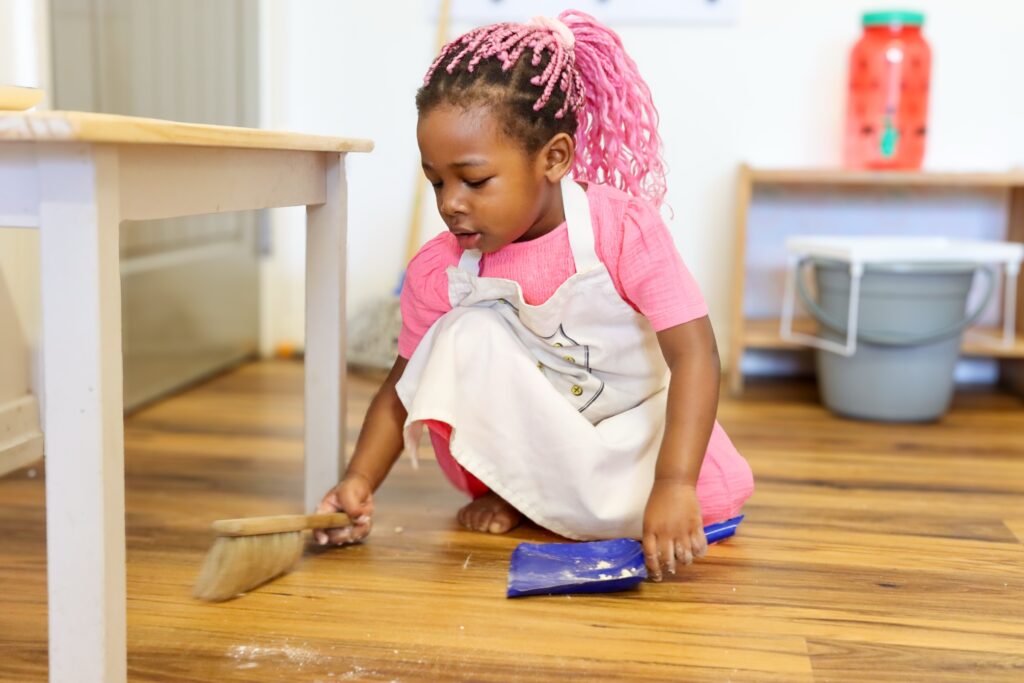The Infant Community

In the ‘Infant Community,’ the environment fosters a strong sense of belonging. It is a place where children, parents, and staff feel valued and comfortable as part of a cohesive group. Daily routines form a large part of the program, with toddlers engaging in purposeful, real-life activities that promote their growing independence.
When a child enters the Infant Community, we need to look at their development. We need to look particularly at their movements and evaluate them. Their hands are now free and how stable they are on their feet? A child arriving at 15 months will be different from a child arriving at 2 years due to more experience on their feet. This will determine what activities you can get the child involved in.
We need to communicate with parents on the activities that the child is doing in the community. This will allow them to set them up at home so that the child can achieve them independently there as well. They will also see that each activity has a reason or purpose eg juicing an orange to make a drink.
In the Infant Community we are going to make sure that all activities are on the shelves and ready to use. All materials need to be ready to go such as soap, polish, brooms and cloths, includes spares to refill activities. Everything needs to be there so that you can enjoy being with the children.
There needs to be order in the activity. In the areas such as Care of Person, Care of Environment, Art, Language and Food Preparation. There needs to be order in how the activity is put together – making the items belong together (colour coordinated). There also needs to be order in the presentation of the activity to the child.
When we set up the environment, we need to consider the time frame of how long the children will be in attendance in the class. If attendance is for 3 hours, they may not do preparation for lunch. We will need to create opportunities for washing up therefore having snacks earlier.
When doing a presentation, we need to analyse our movements and remove any superfluous movements. We need to ask ourselves ‘Why am I making that movement?’ It includes tucking hair behind ears and pushing glasses up. We need to remember that the child will copy our actions.
Caring for the environment covers all activities that make our life more pleasant and easier for ourselves in the Infant Community and around the house.

